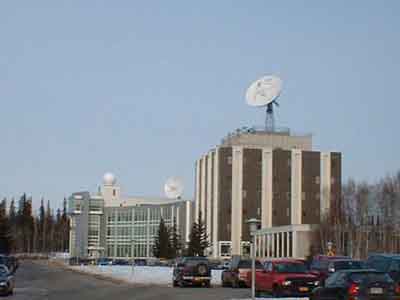While I was at the Geophysical Institute at Fairbanks in 1986, one of the biggest discoveries made was by climatologist Dr. Gunter Weller, of the Atmospheric Sciences Dept. He found, using ice core analysis from cores obtained in Alaska and other polar regions, that ambient air temperatures had increased nearly 7 F in just a few decades and that Alaska was warming much faster than the lower 48. Barely three years later Weller was featured on a CNN spot highlighting his discovery and also an imminent Siberian blast making its way toward the lower 48. (Weller noted the "Siberian blast' was an aberration to his general findings).
Now, new research shows massive leaks of methane gas from the Arctic Ocean with the potential to turn climate change to an even more catastrophic scenario. (Note: Ounce for ounce, methane has an effect on global warming more than 30 times more potent than carbon dioxide ).
In an article which appeared last Sunday in the peer-reviewed journal Nature Geoscience, the authors state that the Arctic Ocean is releasing methane at a rate more than twice what existing scientific models predict. Natalie Shakhova and Igor Semiletov at the University of Alaska- Fairbanks' International Arctic Research Center - after a decade spent researching the Arctic's greenhouse gas emissions- have found this unexpected result.
Shakhova, the lead author of the report, said the methane release rate is likely even greater than their paper describes. In an interview describing the work in The Fairbanks News Miner, she said:
" We decided to be as conservative as possible. We’re actually talking the top of the iceberg.”
This means there's probably a lot left below and that's the part we ought to all be concerned about.
The researchers focused on the continental shelf off the northern coast of eastern Russia - the East Siberian Arctic Shelf. Underlying this region is sub -sea permafrost, similar in many ways to the subsurface permafrost I observed melting in and around Fairbanks in 2005, when Janice and I visited to do some auroral observing, dog sledding, and taking a small plane to Mount Denali.
In the case of the East Siberian Arctic Shelf, it existed as dry land until roughly 7- 15,000 years ago, when it flooded and became part of the Arctic Ocean. During its period as dry land, the shelf developed a layer of permafrost that is now in danger of melting and releasing vast amounts of greenhouse gases.
When visiting the Geophysical Institute in 2005 several climate scientists we spoke to told us they were much more worried about the impact of methane on the global climate system, than CO2. This isn't surprising given earlier studies have shown that the boreal, forested dry land covering much of the world's Arctic and sub-Arctic contain more than 30 percent of the planet's stored carbon. This is mainly in the form of stored CO2.
In addition, one has permafrost bearing methane. When the permafrost melts, the methane can be released. For example, the submerged East Siberian Arctic Shelf contains much of the same stored carbon as the dry tundra to the south but also at least 17 teragrams of methane. (One teragram is equal to one million tons).
The vast carbon stores in the Arctic are also protected by the layer of sub-sea permafrost, but the new research shows it's in danger of disappearing. Core samples taken of the sub-sea permafrost by Shakhova et al show now the temperatures are near the freezing mark (30-32F) Meanwhile, both the top and lower levels of sediment have already thawed. (Some climate modelers had previously suggested this wouldn't happen for five to seven thousand years.)
Shakhova adds:
"What we’re observing right now is much faster than what we anticipated and much faster than what was modeled,”
Is there cause for worry? Shakhova replies: "Absolutely!"
She also says we need to study, but to me - the time for study is over. We need to press the politicians to take action before we're all for the high jump.
The consensus carbon budget estimates that more than half of carbon emissions are human-caused, but these estimates vastly underestimate the amount of carbon stored in the Arctic shelves,
According to Shakhova:
“I believe strongly the Arctic sources are understated and need to be paid more attention,”
What is even more sobering is that the UAF researchers found that the Arctic methane release creates a positive feedback loop: As temperatures increase, more methane is released, and as more methane is released the temperatures increase. In addition, the UAF researchers found an increase in Pacific storms the past decade and that these storms actually also increase methane release. (Much the same way as shaking a soda causes the carbonation to rise.)
But as much as the rest of the planet has to worry, the Arctic has most to lose. Shakhova again:
"When something is warming, when warming occurs, what, do you think, part of the globe will be affected first? The Arctic is warming twice as fast as the rest of the globe. ... This is what affects the number of cyclones. This is what affects the sea ice, which is shrinking.”
Which is similar to what Gunter Weller found in terms of the land-based permafrost melting when he did his own studies nearly thirty years ago. The difference now is that we're entering into a phase of climate criticality that I doubt Weller could have envisaged would arrive as fast as it has.

No comments:
Post a Comment